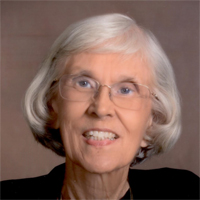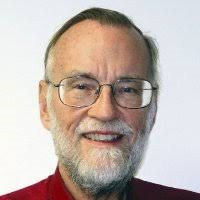
DATAMATH CALCULATOR MUSEUM
 |
DATAMATH CALCULATOR MUSEUM |

 At The Ohio State University we are faced with a situation shared by many colleges and universities. We are an "open door" university with the consequence that this past autumn quarter (1974) we faced approximately 4500 students who were not prepared to begin our precalculus courses. In fact, there has been about a 100% increase in our remedial enrollment in the past 10 years, even though our math placement exams and beginning course placement algorithms have not changed during that period [1].
At The Ohio State University we are faced with a situation shared by many colleges and universities. We are an "open door" university with the consequence that this past autumn quarter (1974) we faced approximately 4500 students who were not prepared to begin our precalculus courses. In fact, there has been about a 100% increase in our remedial enrollment in the past 10 years, even though our math placement exams and beginning course placement algorithms have not changed during that period [1].
The content of our remedial course is a standard review of elementary and intermediate high school algebra and coordinate geometry. It is offered in both a regular pace, one-quarter, or reduced pace, two-quarter, format. In past years we used a television lecture technique to provide basic instruction for our immense remedial audience. However, this past autumn quarter, we were able to teach our regular pace remedial group (a 5-credit-hour course of about 2600 students) using experienced mathematics faculty presenting live lectures three times per week to groups of about 300 students. Small recitation classes, meeting twice each week, were conducted by graduate student teaching assistants.
The enrollment in our remedial course includes typically a large number of students from diverse backgrounds, with equally diverse abilities, with poor attitudes toward the study of mathematics, with poor study habits and, to a large extent, poor academic motivation. A majority of the students who place in our regular pace remedial course have been exposed to two or three years of high school algebra and geometry. We find that a one-quarter review course is sufficient to prepare most of them for a standard precalculus course.
The persons in our department who lectured and coordinated our regular pace course autumn quarter were Harry Allen, Franklin Demana, Judith Elkins, Joan Leitzel and Robert Wright. These teachers had certain commitments: the course should not be merely a rerun of the typical high school course where most of these students had, in reality, only limited success; the course should be based on problem solving and, to a large extent, on computation and manipulation; problems should be inherently interesting and challenging. Consideration of requiring a hand-held calculator for this course arose naturally in the hope that it could be used as an effective pedagogical device to gain (and hold) student interest, to relieve the teacher of teaching arithmetic, and to permit the confronting of more realistic problems.

 The immediate problem was to find a high-quality calculator in the $15.00 to $20.00 range. After spending a few weeks considering several calculators, we made arrangements with Texas Instruments Corporation to manufacture, for our experimental use, the
Exactra 19 calculator, a four-function, six-digit, floating-decimal, algebraic-entry type calculator with a built-in, repeat-operation capability. These calculators were sold to our students through local bookstores at a list price of $16.30, excluding batteries. The purchase of a calculator was required of the student in the same sense that the purchase of a textbook was required. It was used by the student for c1asswork and homework and during all quizzes and examinations given during the quarter.
The immediate problem was to find a high-quality calculator in the $15.00 to $20.00 range. After spending a few weeks considering several calculators, we made arrangements with Texas Instruments Corporation to manufacture, for our experimental use, the
Exactra 19 calculator, a four-function, six-digit, floating-decimal, algebraic-entry type calculator with a built-in, repeat-operation capability. These calculators were sold to our students through local bookstores at a list price of $16.30, excluding batteries. The purchase of a calculator was required of the student in the same sense that the purchase of a textbook was required. It was used by the student for c1asswork and homework and during all quizzes and examinations given during the quarter.
We found no text exactly suitable for our needs. The text finally adopted, although well-written and readable, did not focus on computation and did not provide sufficient problems appropriate for the calculator. Each regular pace lecturer wrote weekly supplementary problem sets designed to investigate topics such as area, radicals, rules of exponents, graphing, limits, and slope through a basically computational approach. The problem sets were designed to encourage students to explore and experiment.
Our autumn quarter efforts indicate considerable promise. The calculator provides a sound method for empirical experimentation in approaching written problems; indeed, many students understand for the first time what these problems are asking. The dependence of area and volume on length of side can be vividly demonstrated, as can other functional relationships. The meaning of the graph of a function can be understood by plotting a very large number of points. Students can be encouraged to approximate solutions to equations and inequalities and to check exact solutions to equations. The notion of limit can be first experienced in a computational way.
We found that in using calculators students raised questions about arithmetic properties of numbers that would have been of little interest to them otherwise. The student who did not understand the mathematics underlying his computations could not use his calculator successfully; moreover, the desire to use the calculator seemed often to motivate this understanding. The question of whether a person who uses a hand-held calculator to do computations is somehow less educated than a person who does computations mentally we will leave for others to decide.
Student attendance was good throughout the quarter and student attitudes remained positive regarding the use of the calculator. A summary of autumn quarter student evaluation results for both our reduced pace and regular pace courses is given in the accompanying chart. About 2250 students completed and returned the evaluation form. We have evidence that suggests the group this year using calculators performed equivalently to the group last year on problems testing basic algebraic skills. In addition, the calculator group did very well on problems requiring some understanding and putting together of ideas.
For spring quarter, we are decreasing the lecture time and increasing the recitation time in the course. We are also reducing the size of the lecture sections to about 150 students. The recitation time will be used primarily for supervised problem-solving in a laboratory spirit. In future quarters, we shall move to a comparably priced, 8-digit calculator. We are also naturally exploring the routine use of calculators in the follow-up precalculus courses. Our hope is that soon the prices of full feature scientific calculators (transcendental functions, XY, etc.) will be within the reach of most students with majors in mathematics, engineering and the sciences. At such time we believe the traditional precalculus curriculum will need to be significantly revised.
We cannot suggest that the calculator will solve all of the difficult instructional problems in the teaching of mathematics at the beginning college level. However, it does seem to have considerable potential for alleviating some problems inherent in remedial courses.
 Added in proof: In 1975-76 we taught the regular pace sections of the course described above with two lecture meetings (150 students each) and three problem sessions (25 students each) a week. We will continue this format in autumn quarter, 1976, and also introduce a lower level course for those students who formerly have been placed into the reduced pace sections. This new course will also require calculators. Fortunately the present state of technology permits students to purchase suitable four-function calculators (capable of handling the arithmetic of signed numbers) for less than $10.00.
Added in proof: In 1975-76 we taught the regular pace sections of the course described above with two lecture meetings (150 students each) and three problem sessions (25 students each) a week. We will continue this format in autumn quarter, 1976, and also introduce a lower level course for those students who formerly have been placed into the reduced pace sections. This new course will also require calculators. Fortunately the present state of technology permits students to purchase suitable four-function calculators (capable of handling the arithmetic of signed numbers) for less than $10.00.
Reference
1. Unpublished reports from The Office of Testing and Evaluation, The Ohio State University, 1965-1974.
DEPARTMENT OF MATHEMATICS, THE OHIO STATE UNIVERSITY, COLUMBUS, OH 43210.
|
PERCENT RESPONSE |
||||
| STATEMENT |
STRONGLY AGREE |
AGREE |
DISAGREE |
STRONGLY DISAGREE |
| Having a calculator was helpful in this course. | 56 | 35 | 6 | 3 |
|
I am glad I took this course before taking a higher level math course. |
56 | 33 | 7 | 4 |
| My present attitude towards mathematics is favorable. | 15 | 44 | 24 | 17 |
| This course improved my attitude towards mathematics. | 10 | 36 | 33 | 21 |
 Joan R. Leitzel was a Professor of Mathematics at Ohio State and moved into administration as Associate Provost for Curriculum and Instruction. In 1990, she went to the National Science Foundation as a division director, and then to the University of Nebraska as a senior Vice Chancellor for Academic Affairs of Provost. She then Became the President of the University of New Hampshire. She retired in 2002 and returned to Columbus.
Joan R. Leitzel was a Professor of Mathematics at Ohio State and moved into administration as Associate Provost for Curriculum and Instruction. In 1990, she went to the National Science Foundation as a division director, and then to the University of Nebraska as a senior Vice Chancellor for Academic Affairs of Provost. She then Became the President of the University of New Hampshire. She retired in 2002 and returned to Columbus. Bert Waits was a true visionary in the field of mathematics education, the champion of the graphing calculator, and the cofounder of T3-Teachers Teaching with Technology-alongside his friend Frank Demana. Anyone who has taken a mathematics class in the past 30 years is likely to have benefited from the educational tools, professional development, and mathematics curriculum devised under his guidance.
Bert Waits was a true visionary in the field of mathematics education, the champion of the graphing calculator, and the cofounder of T3-Teachers Teaching with Technology-alongside his friend Frank Demana. Anyone who has taken a mathematics class in the past 30 years is likely to have benefited from the educational tools, professional development, and mathematics curriculum devised under his guidance.If you have additions to the above article please email: joerg@datamath.org.
© Joan Leitzel and Bert Waits, adopted by Joerg Woerner, December 30, 2017. No reprints without written permission.